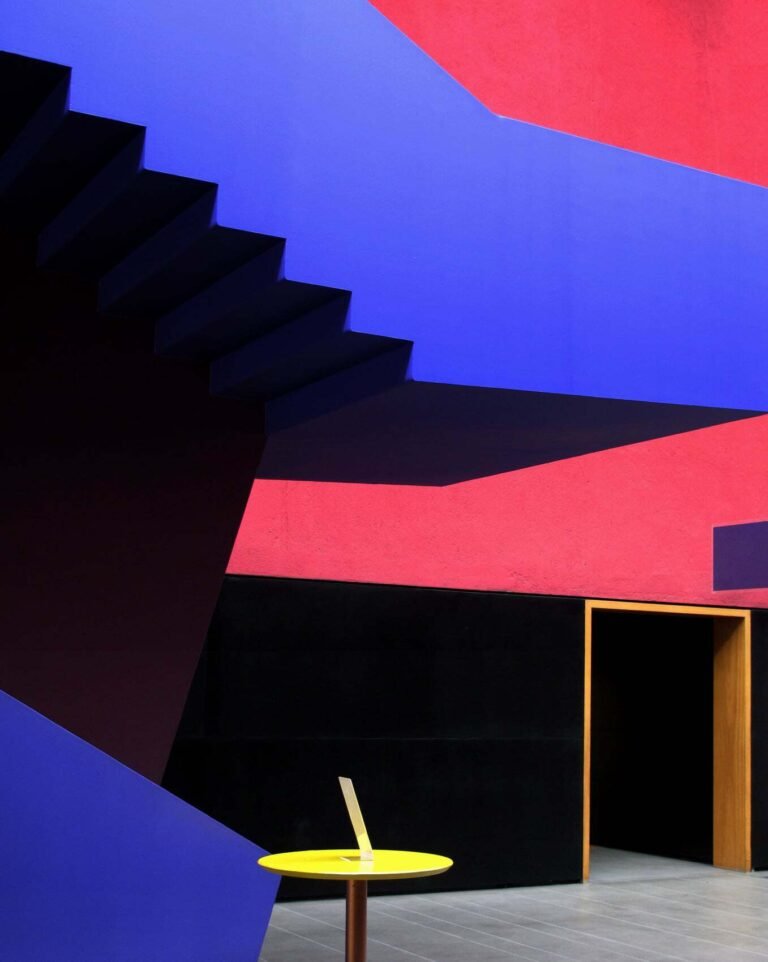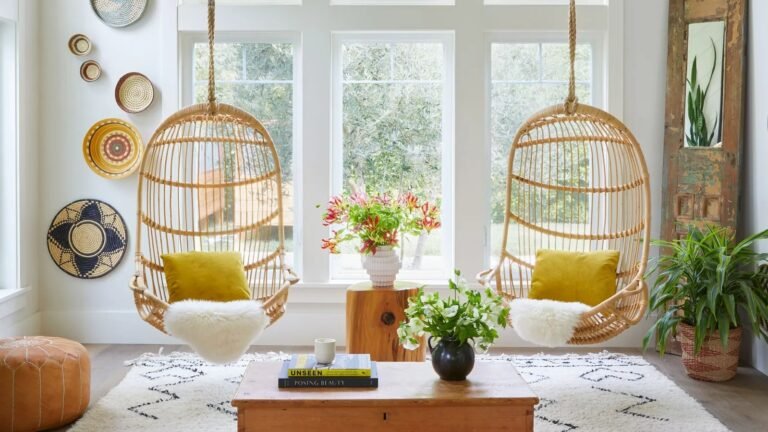Life in Plastic: 8 Instances Architects Rehabilitated the “World’s Most Hated Materials”
The 10th Annual A+Awards is still accepting entries! New this season, firms can gain recognition for their entire portfolio of work thanks to the addition of the new Best Firm categories celebrating practices of all sizes, geographies and specializations. Start your entry today.
Memes about plastic straws and turtles are not an uncommon sight when scrolling through social media. What could be laughed off as a joke is actually a major problem that we are struggling with today — plastic pollution. Plastics are present in every aspect of our lives, from our grocery packaging to the cards we use to pay for them. But while the material is convenient to use and facilitates cheaper production and packaging, it is causing excessive harm to the natural ecosystems, to the point where it has been labeled our most hated material.
According to a United Nations Environment Programme report, plastic waste production has amounted to about 300 million tons in recent years. Of the 8.3 billion tons of plastic that has been produced since the 1950s, 60% has either filled up landfills or entered marine ecosystems. Furthermore, plastics have also contributed to a significant amount of greenhouse gas emissions.
Conversations around the use of plastic and the hunt for alternatives have now become a norm. People are championing the use of reusable cloth bags, paper straws, silicone containers and also trying to incorporate recycling in their daily lives. Amid these talks, some designers have stepped in to create public art that forces these discussions further by making the best use of plastic that might otherwise end up in landfills. The following projects showcase a few ways in which they have done so.
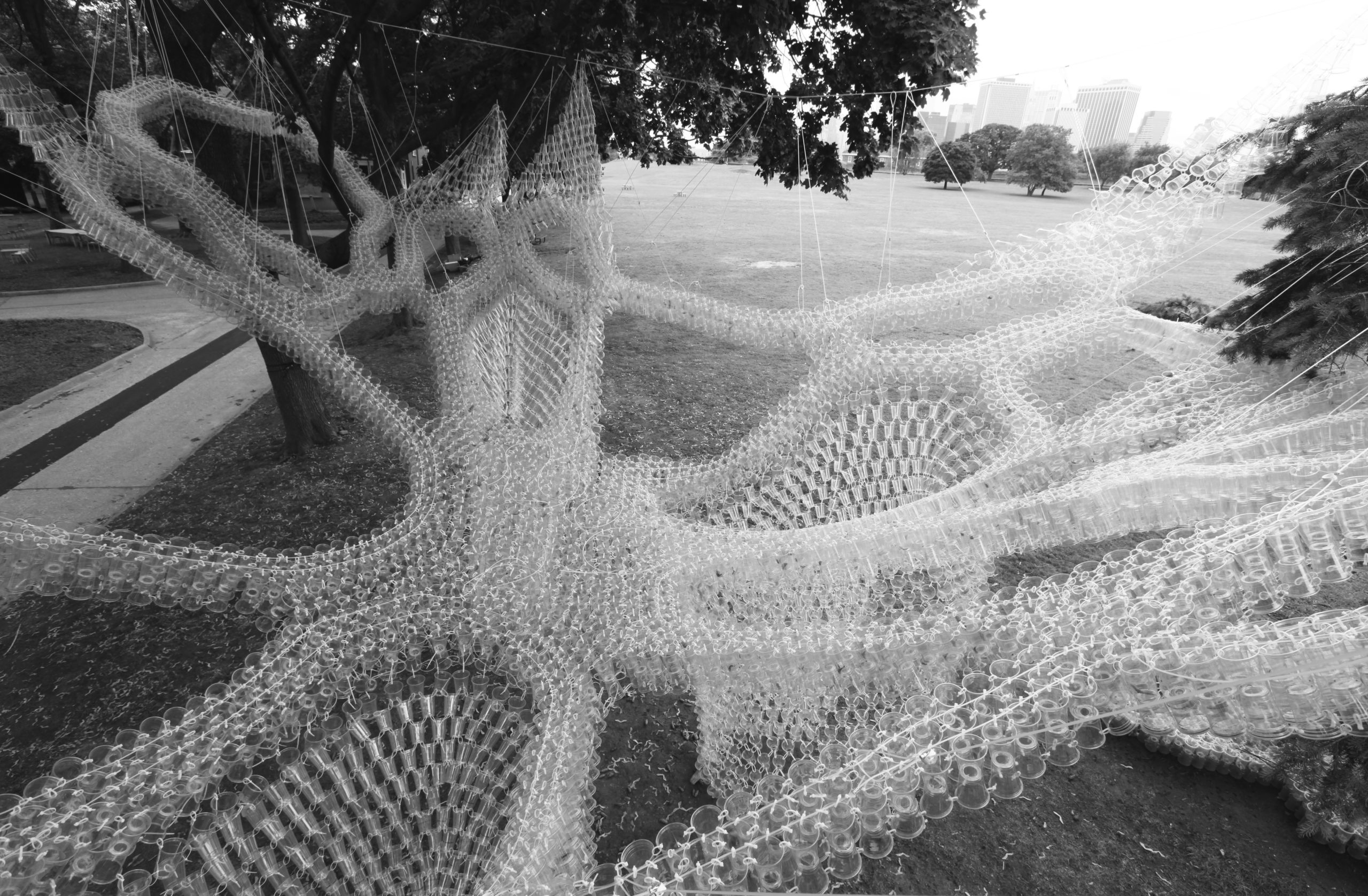
Image by Ashley Simone
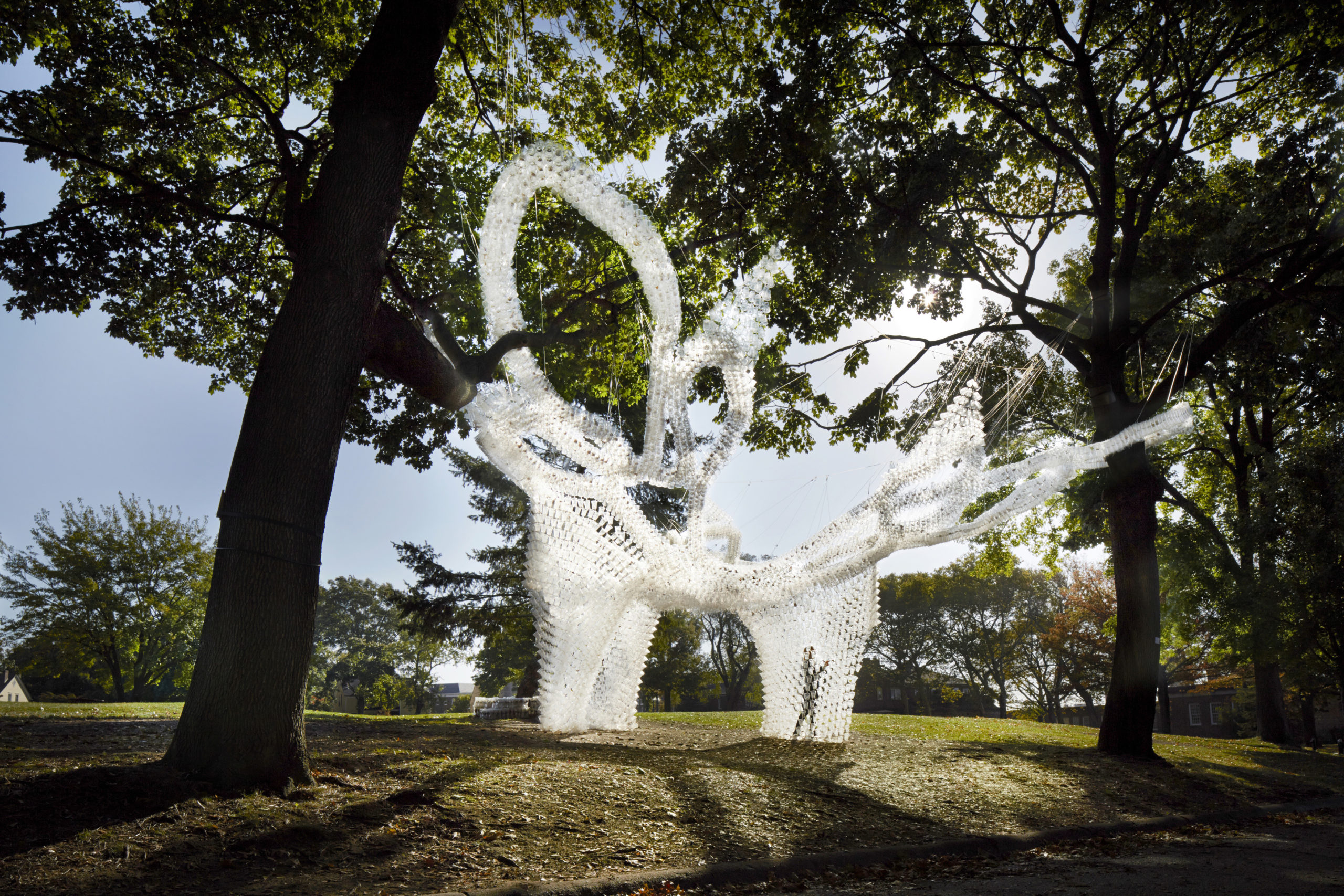
Image by John Muggenborg Architectural Photography
Governor’s Cup Pavilion by CDR Studio Architects, PC, New York, New York
The installation was the winner of the City of Dreams Pavilion design competition in New York. Referencing the 100 billion cups that are found in landfills every year, the tape-lace crochet-inspired design is made using about 30,000 recycled plastic cups. Over 100 volunteers came together with CDR Studio to help build this pavilion by drilling holes and gluing them together to make smaller modules which eventually composed the entire structure. Its unique form acts as a canopy, creates a gathering space and serves as a conversation starter.
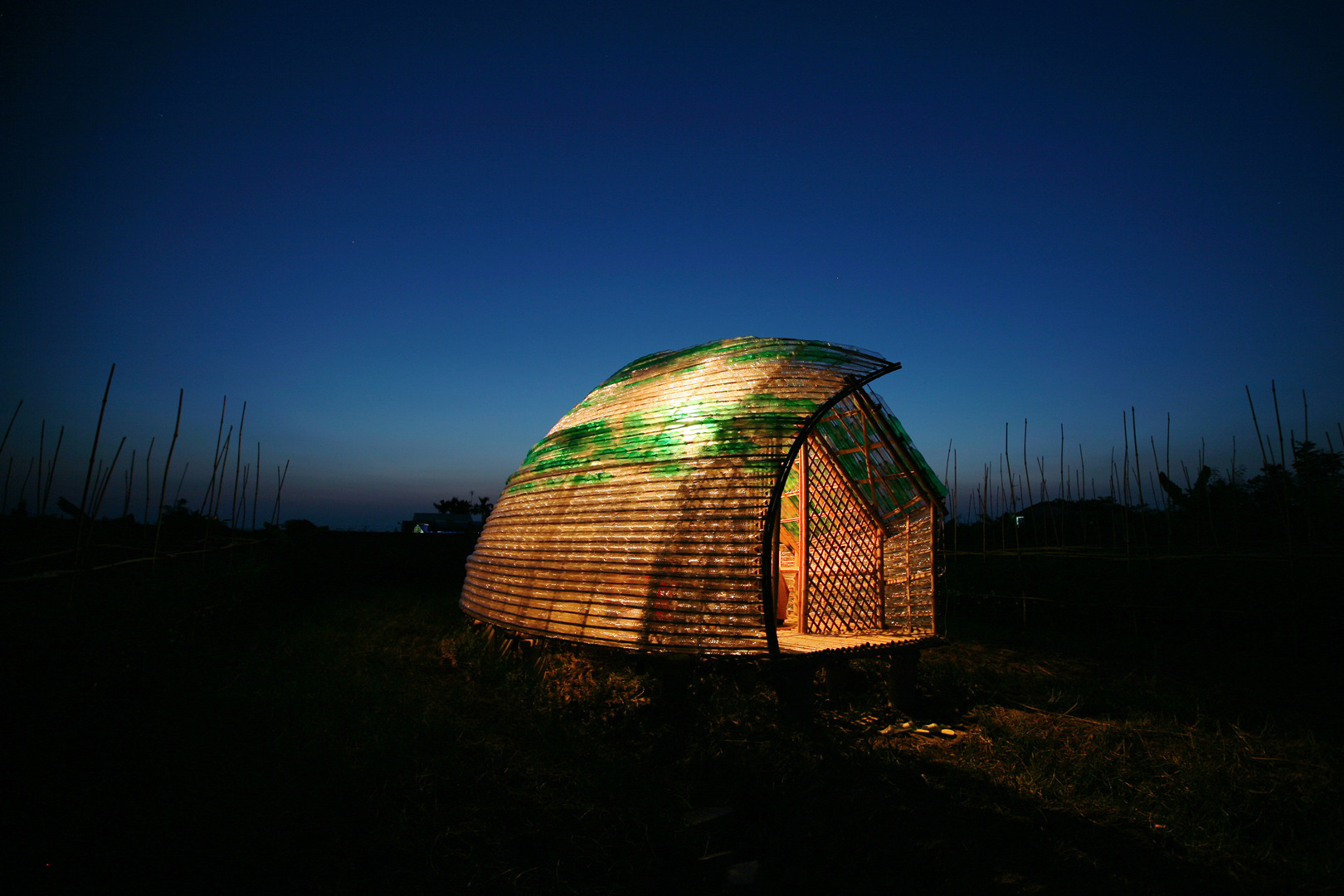
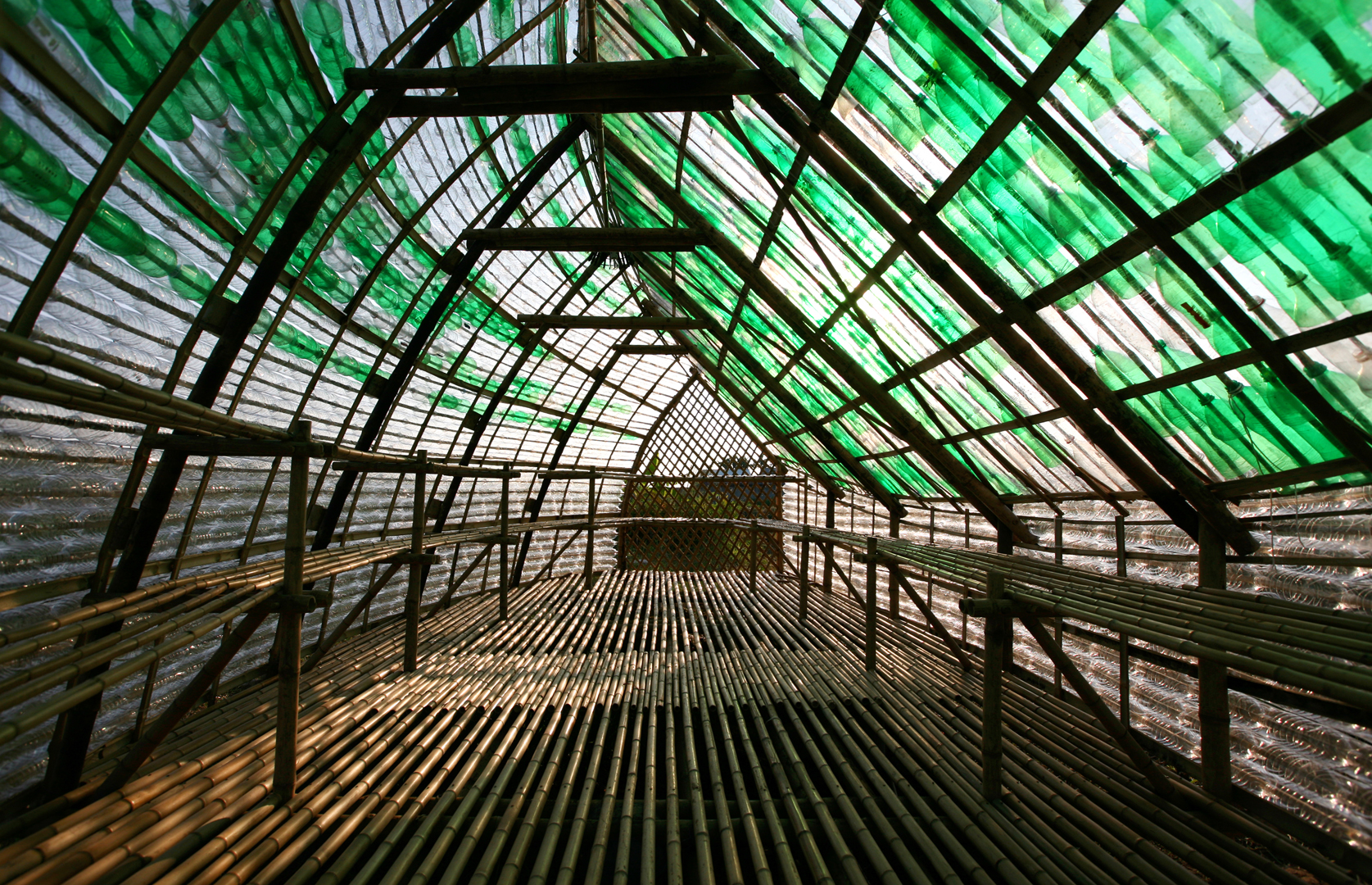 Bottle Sail by 1+1>2 Architects, Haiphong, Vietnam
Bottle Sail by 1+1>2 Architects, Haiphong, Vietnam
This house, which is one of many community development projects conceptualized by 1+1>2 Architects, specifically benefits rural communities affected with HIV/AIDS. The region is prone to 12 typhoons a year, so the studio wanted to create a design that would protect the seedlings in the farm in such harsh conditions. The structure is equipped with cross bracing and its concrete foundation is buried deep in the ground. Shaped like a windsail, the shelter is covered in about 3,000 plastic bottles and protects about 10,000 tomato seedlings. It also acts as a space for the farmers to relax and for children to host after-school activities.
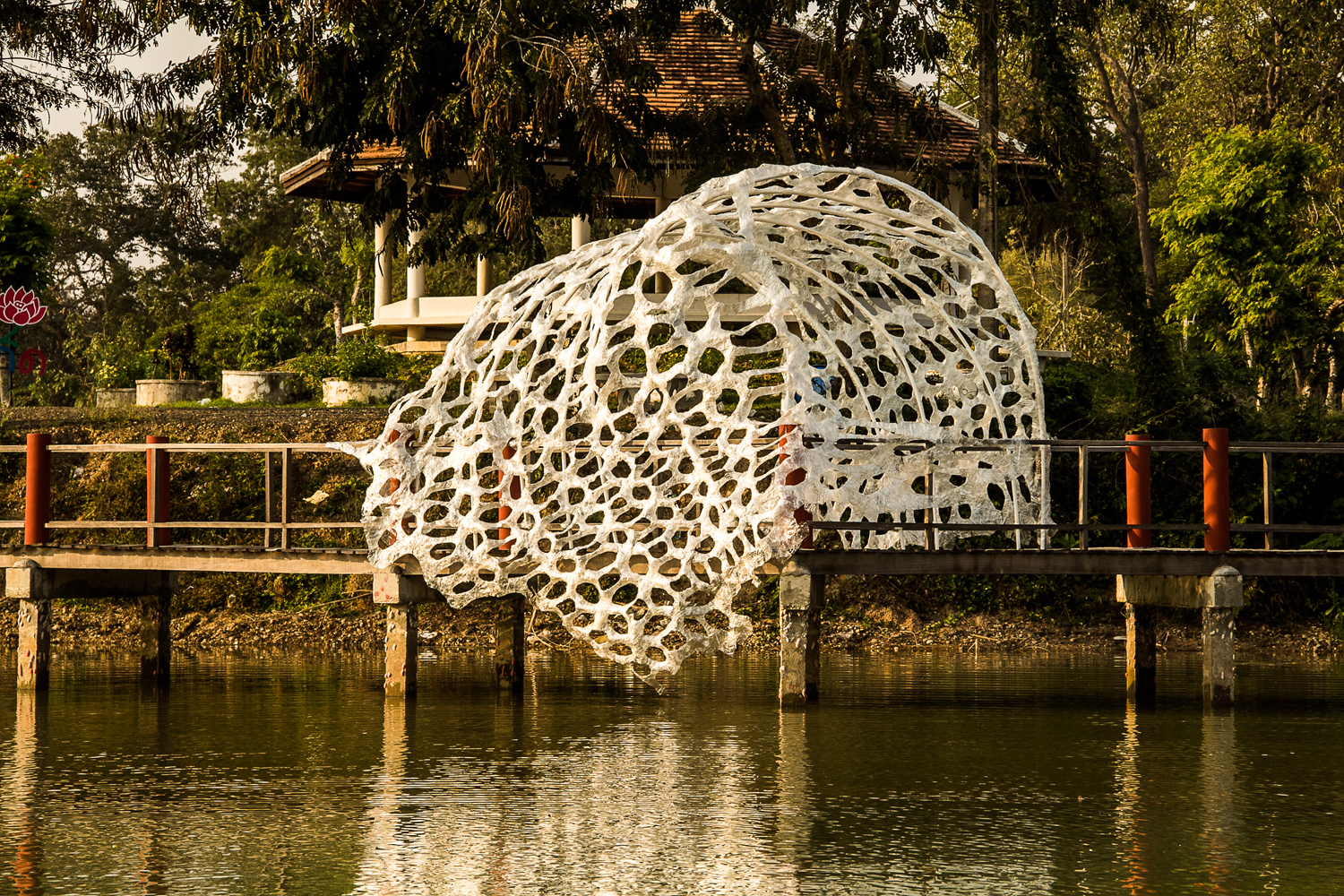
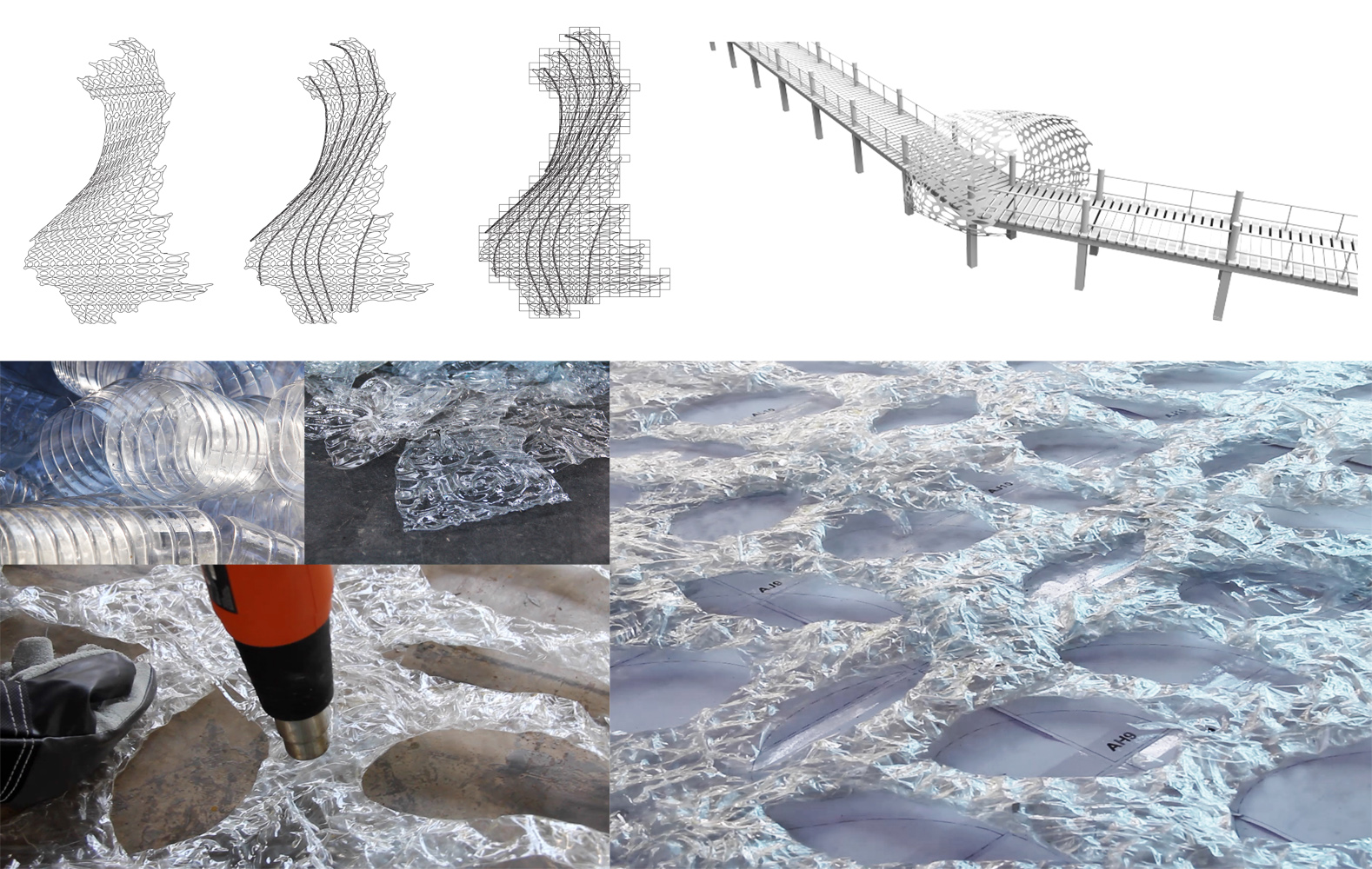 Self-Ornamentalize by Vinn Patararin X Fahpav, Chiang Mai, Thailand
Self-Ornamentalize by Vinn Patararin X Fahpav, Chiang Mai, Thailand
The design is a collaboration between the firms Vinn Patararin and Fahpav for the Compeung artist residency program in Thailand. They discovered a large amount of plastic in the immediate environment and a lack of hand-weaving and naturally grown materials due to the expansion of the urban environment. Assuming plastic to be the material of today, 850 plastic bottles were used for their translucency and malleability. The design inspires self-discovery and increases awareness about materials, technology and craftsmanship.
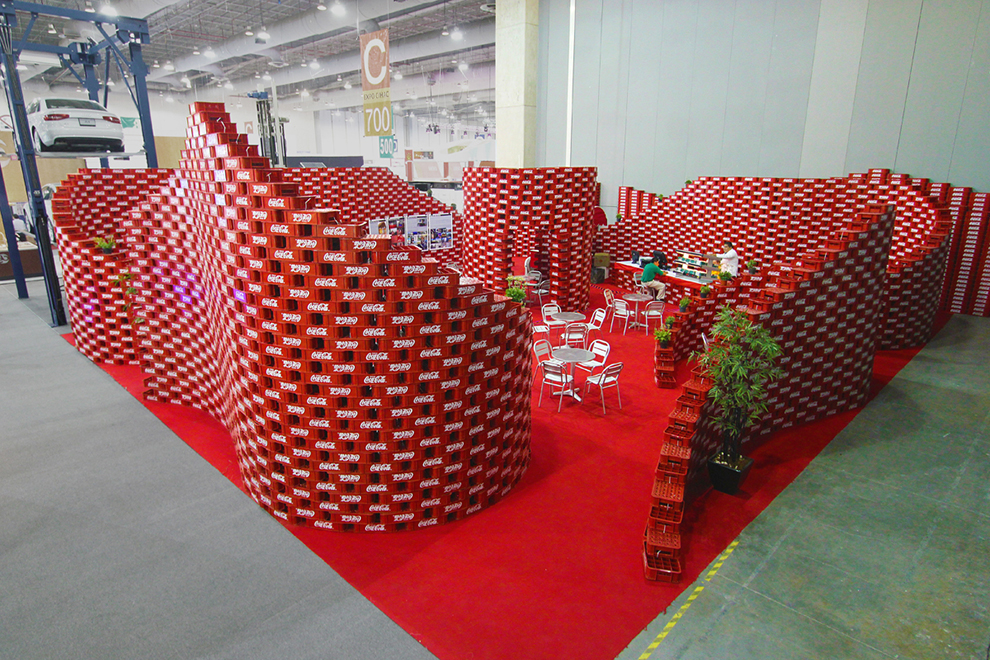
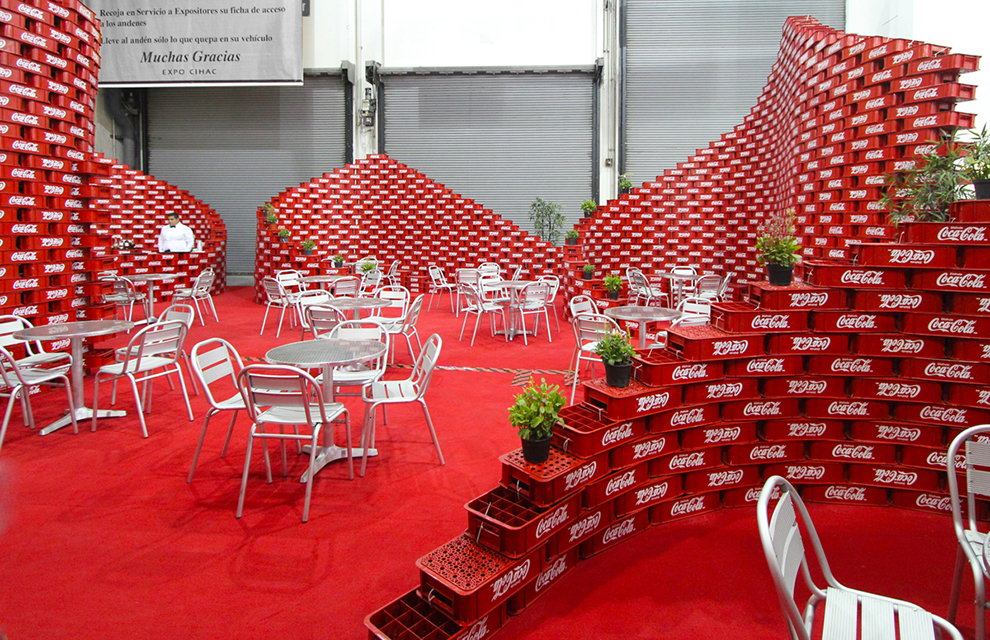 Upcycling Pavilion by Bunker Arquitectura, Mexico City, Mexico
Upcycling Pavilion by Bunker Arquitectura, Mexico City, Mexico
The studio wanted to make a statement about the contamination caused by the waste generated due after temporary exhibitions. They created a low-cost zero-waste installation by stacking soda crates that were sponsored by Coca-Cola. These crates are attached using plastic cinch straps so that they can be detached and returned once the exhibit is over. The curved walls of the pavilion create nooks for people to sit within the café.
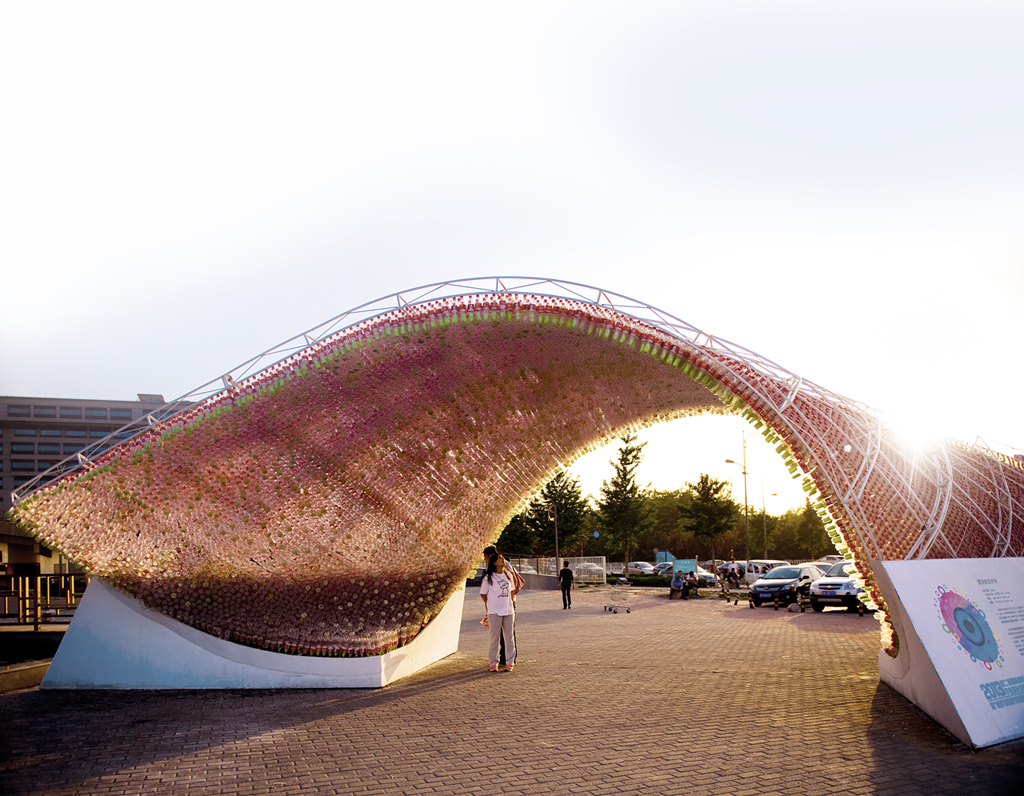
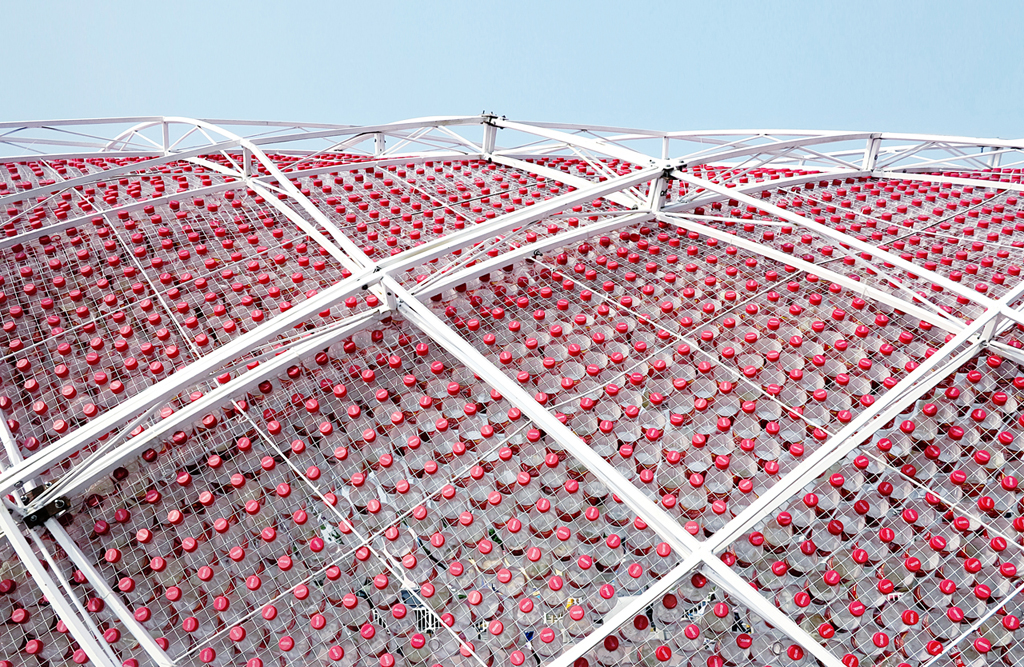 Cola-Bow by Precht, Beijing, China
Cola-Bow by Precht, Beijing, China
Cola-Bow is another installation that uses plastic bottles in their original form. The form, made from 17,000 Coke bottles, was inspired by the waves of the Coca-Cola logo. The bottles were collected in a joint initiative with universities in the city where Coca-Cola China gave citizens a bottle of the beverage for every empty one that was brought in for recycling. Apart from serving as a sculpture, the installation is a comment on plastic pollution and champions awareness about recycling.

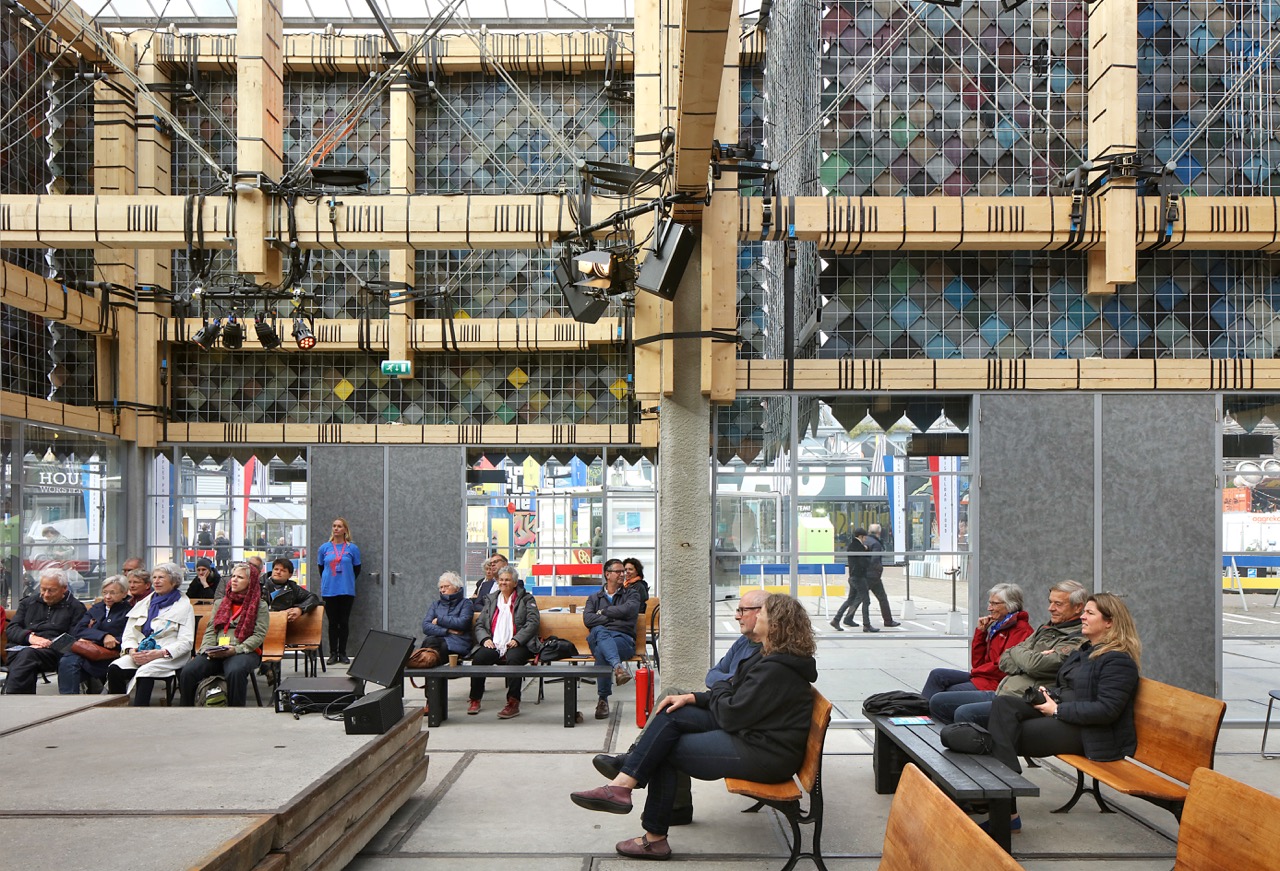 People’s Pavilion – 100% Borrowed by bureau SLA, Eindhoven, Netherlands
People’s Pavilion – 100% Borrowed by bureau SLA, Eindhoven, Netherlands
Exemplifying the concept of circular economy, the building only uses borrowed materials for its construction. These materials come from traditional sources like suppliers and producers as well as the residents of the city themselves. Every element used — from the concrete and wooden beams to the lighting, glass and plastic cladding — is attached in a way that it can be returned to its owners just as it was received. The multi-colored façade is made from plastic waste collected from the households as well. This pavilion won several awards like the Frame Awards 2018 in the Sustainable Design category, the ARC18 Innovation Award and the Dutch Design Awards 2018 in the Habitat category.
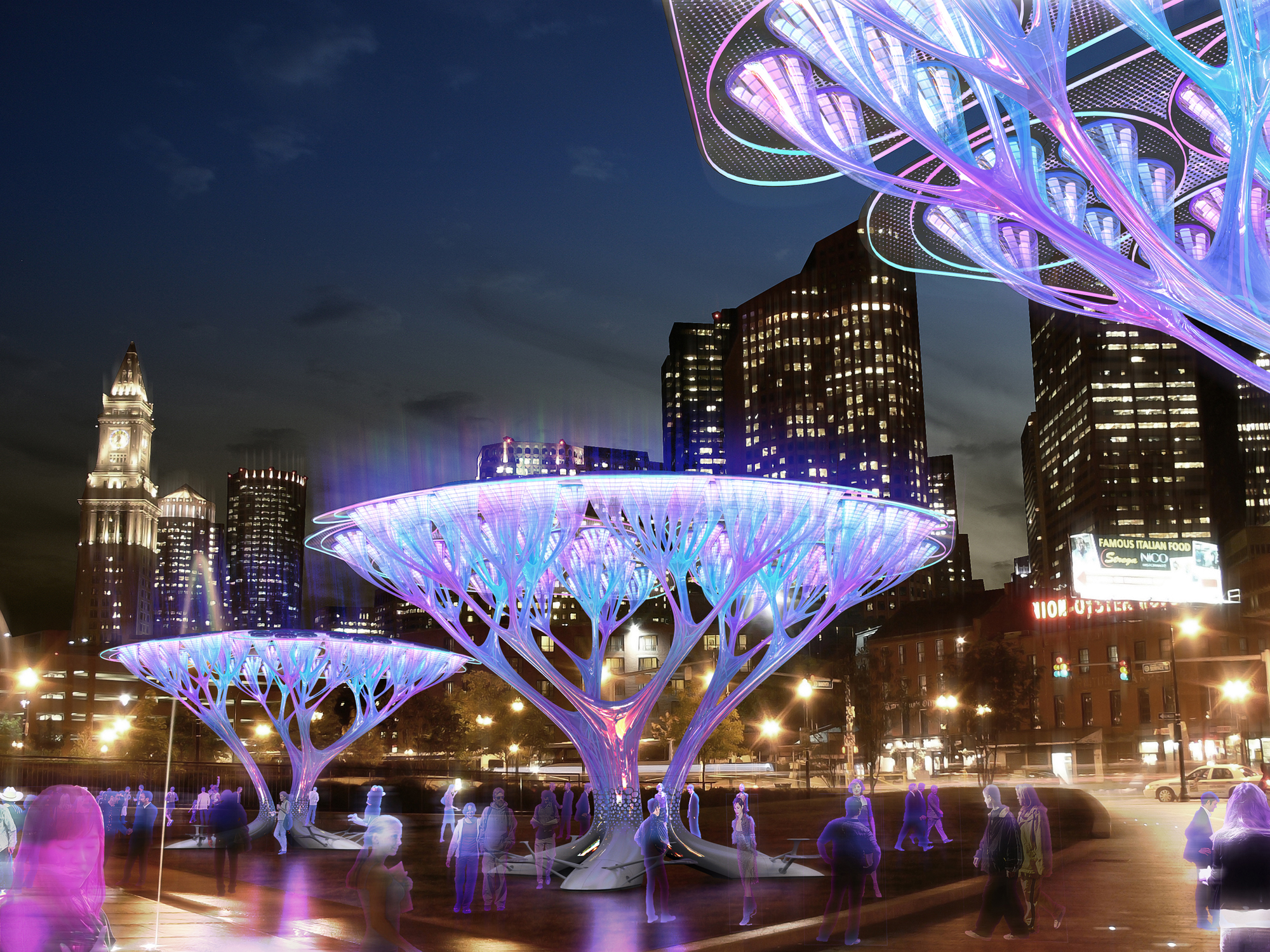
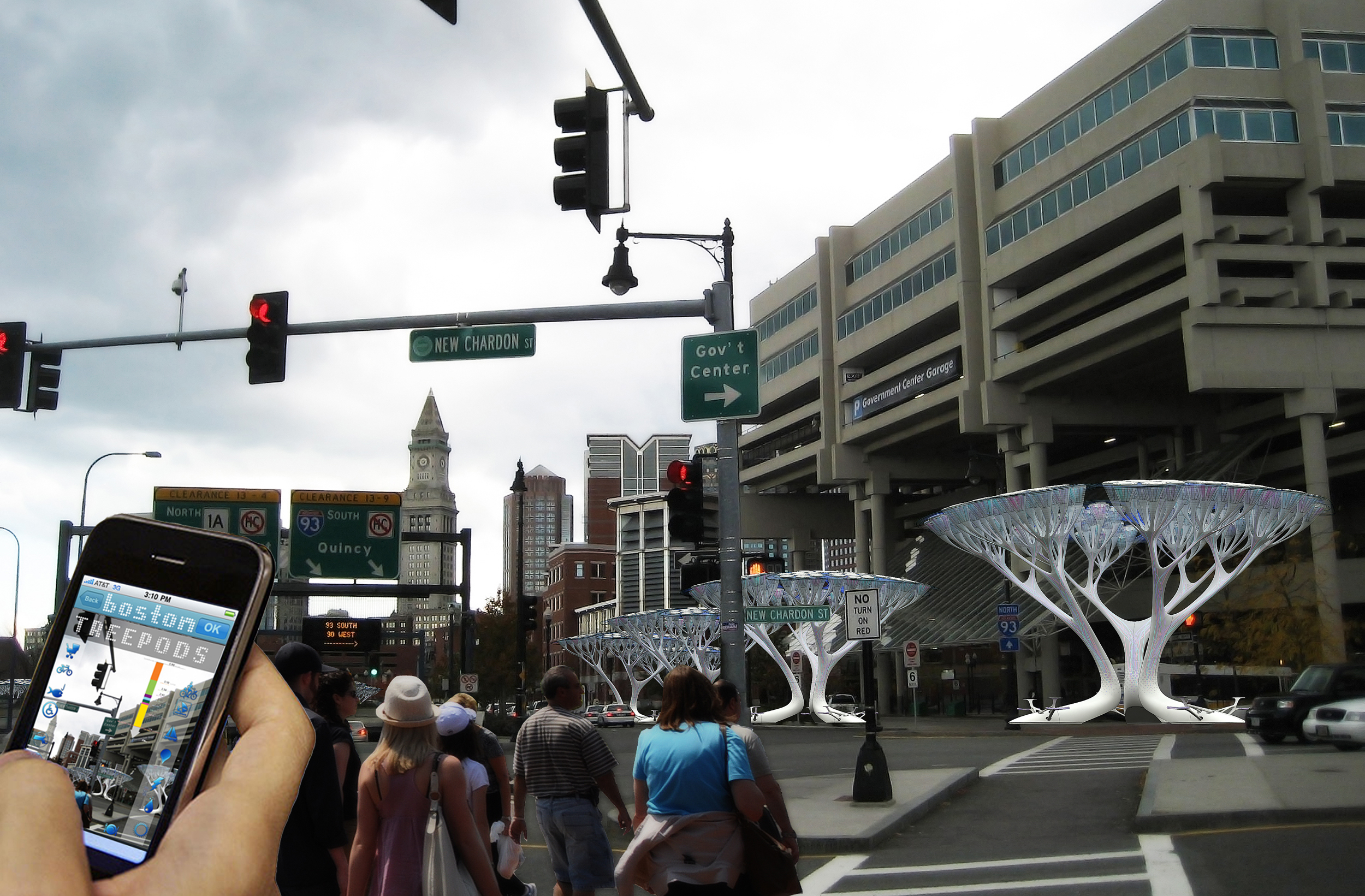 Boston Treepods by AETRANGERE, Boston, Massachusetts
Boston Treepods by AETRANGERE, Boston, Massachusetts
The Boston Treepods initiative works by converting carbon dioxide to oxygen and contributing towards the city’s goals of transitioning to zero carbon energy. Defined as “CO2-scrubbing living machines”, the recycled plastic pods mimic the Dragon Blood Trees in shape to provide maximum shade, wind flow and furniture support while trapping the greenhouse gas and generating solar energy. Each pod can be used in clusters or as a standalone structure throughout the city as needed.
The 10th Annual A+Awards is still accepting entries! New this season, firms can gain recognition for their entire portfolio of work thanks to the addition of the new Best Firm categories celebrating practices of all sizes, geographies and specializations. Start your entry today.


